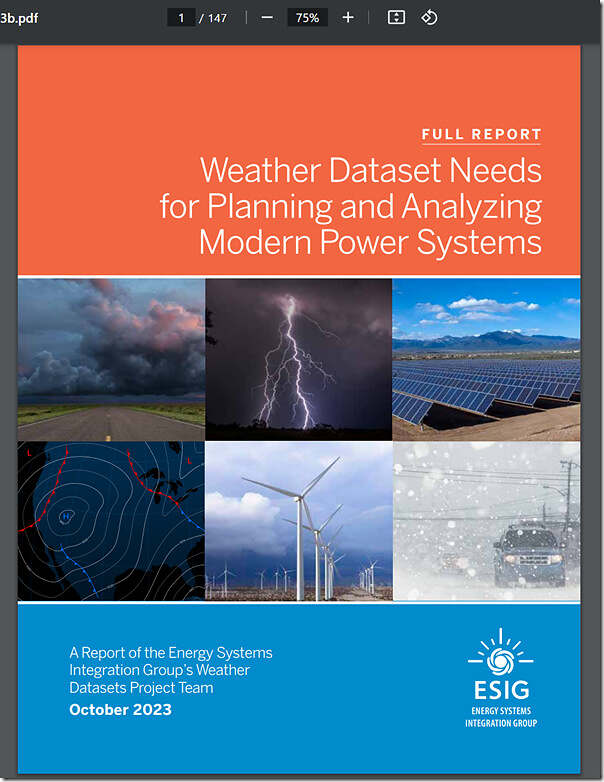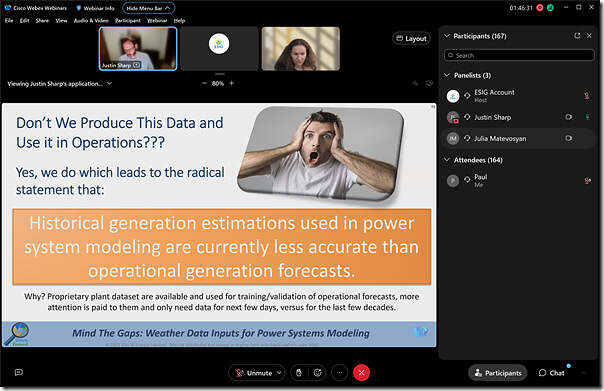This short article is really a public service announcement, following an ESIG Webinar featuring Justin Sharp this morning.
(A) ‘The NEM is increasingly dependent on the weather’
Back in 2018 when we were compiling what became the GRC2018, we wrote about how ‘The NEM is becoming increasingly Dependent on the Weather’ … as Theme 6 within Part 2 of the 180-page analytical component:
It was over 5 years ago when we wrote that – and it’s obvious that this has become increasingly the case (and that trend has really only begun).
(B) It’s a global challenge
So it was useful this morning to spend an hour listening into a webinar organised by ESIG, during which Justin Sharp shared some of his wisdom about challenges with weather modelling – with a particular focus on the North American grid, but really relevant to many other parts of the world as well (including the NEM).
This webinar came off the back of this 147-page ESIG Report ‘Weather Dataset Needs for Planning and Analyzing Modern Power Systems’:
I’ve not yet had time to read through this report, but the webinar was an effective teaser for it – complete with a significant number of memorable statements from Justin … some of which I’ve tried to record as follows (readers should note there may be errors in transcription!):
‘better forecasting only assists with reducing uncertainty … you cannot mitigate variability with better forecasting – that needs to be done by better planning’
… and …
‘datasets are increasingly complex – wind and solar data is typically not observational (unlike temperature, which people are more used to working with) … it’s modelled results based on (much sparser) observations’
… and …
‘GIGO (garbage in = garbage out) … and there’s a lot of garbage out there’
… and …
‘even though all the talk is about climate change, climate variability is a big deal’
… and …
‘the problem with machine learning is that it does not do a good job with the outliers (which are very important)’
… and …
can’t really put in quotes as did not capture it at the time, but there was an interesting comment in the questions about how monte-carlo typically uses a randomised distribution of outages (in planning studies), but some of these limitations are weather dependent
… and …
‘the method used to produce operational forecasts is similar to the method used to take a limited set of observational data and produced modelled historical patterns that are sometime mistaken as observations (i.e. see above)’
… and …
‘modelling solar is not as difficult as modelling wind – with 2 main reasons given:
Reason 1) wind speeds are so much more dependent on local factors (topography and so on), whereas solar irradiance is less variable in that way; and
Reason 2) wind relationships are cubic, so small errors magnify’
… and …
‘the forecasts we produce for operational* forecasting are better than the (longer-term) forecasts we use for planning’ … e.g. for output of wind and solar fleet
* i.e. short-term focus for next day or two
… there was even a slide about this one:
That’s all for now…





This aligns well with an AEMO webinar a couple of years ago by Jack Fox, explaining that the weather is now the largest source of forecasting error.